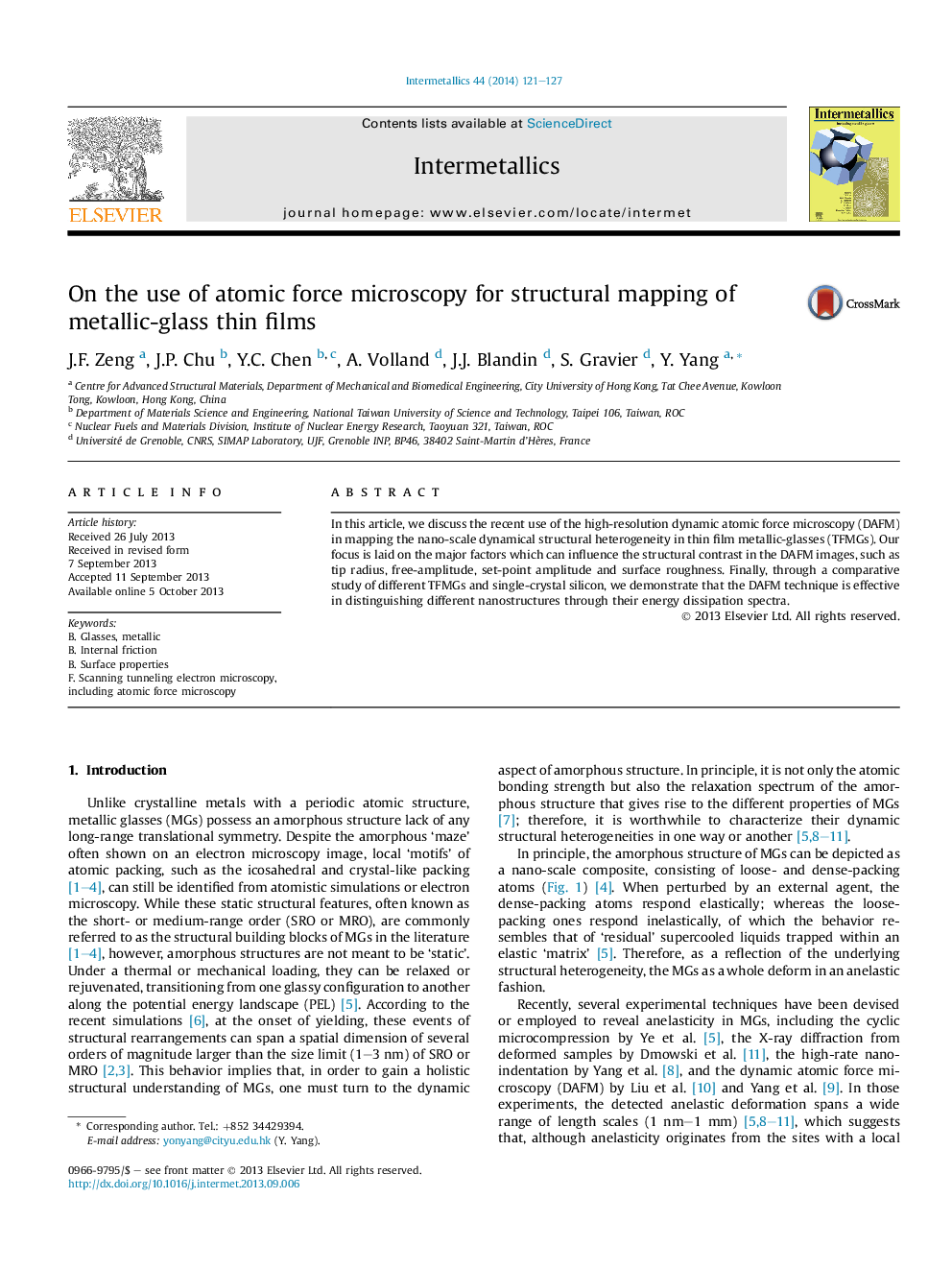| Article ID | Journal | Published Year | Pages | File Type |
|---|---|---|---|---|
| 1600236 | Intermetallics | 2014 | 7 Pages |
•Obtaining the structural image requires adjusting the free amplitude.•Obtaining the structural image requires adjusting the set-point amplitude.•Obtaining the structural image demands a smooth surface.•The obtained structural image is tip radius dependent.•The obtained structural images can distinguish different nanostructures.
In this article, we discuss the recent use of the high-resolution dynamic atomic force microscopy (DAFM) in mapping the nano-scale dynamical structural heterogeneity in thin film metallic-glasses (TFMGs). Our focus is laid on the major factors which can influence the structural contrast in the DAFM images, such as tip radius, free-amplitude, set-point amplitude and surface roughness. Finally, through a comparative study of different TFMGs and single-crystal silicon, we demonstrate that the DAFM technique is effective in distinguishing different nanostructures through their energy dissipation spectra.
